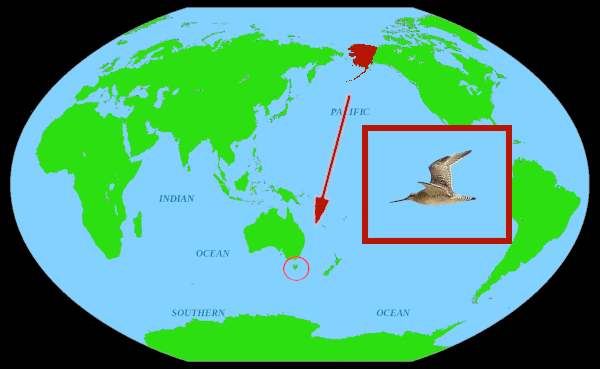
Circle the area on this map

C. Measured around the poles, the Earth’s circumference is 24,859 miles. The bird’s 8,435-mile trip is 33.9 percent of that distance.
A. The Aleutian Islands are a chain of 14 large volcanic islands and 55 smaller islands that stretch from Alaska to Siberia in the Russian Federation. Most of the islands belong to Alaska. The Aleuts, Chukchi, Inupiaq and Yupik are indigenous peoples living in the Arctic and subarctic regions near the Bering Sea.
D. The Pacific Ocean division of the world ocean is 63.8 million square miles, while the Earth’s land area covers 57 million square miles. The Pacific is bounded by Asia and Australia to the west and North and South America to the east. It extends from the waters of the Arctic Ocean in the north to the Southern Ocean in the south.
D. The island of Tasmania was inhabited by Aboriginal peoples for nearly 40,000 years before they were wiped out by British prisoners and colonists during the 19th century. H.G. Wells cited that genocide in the opening chapter of his novel about invading Martians trying to destroy humanity, so the aliens could colonize the planet.